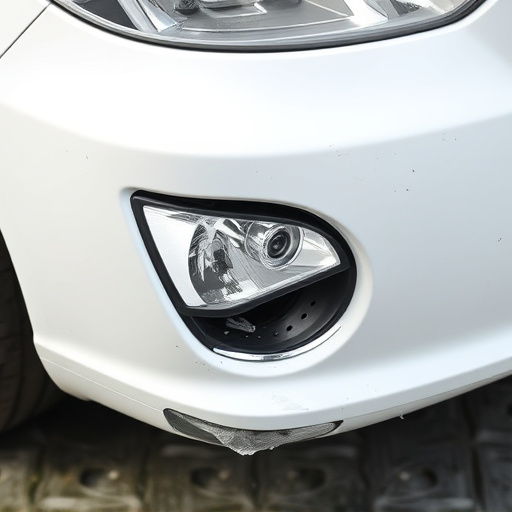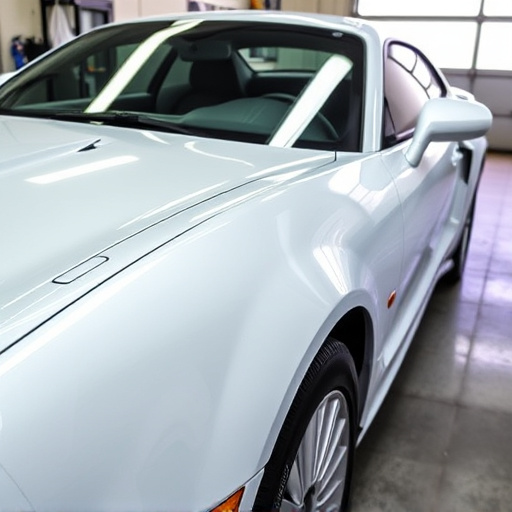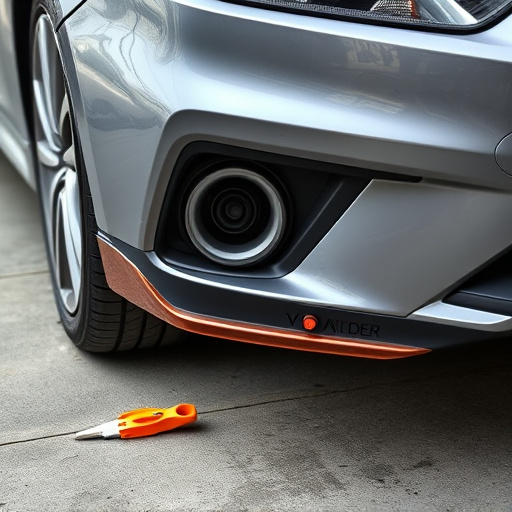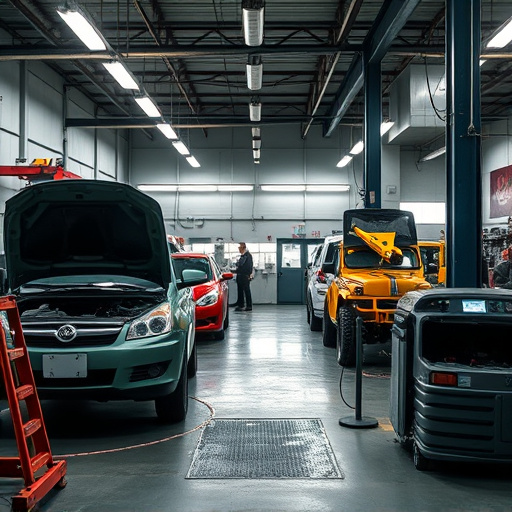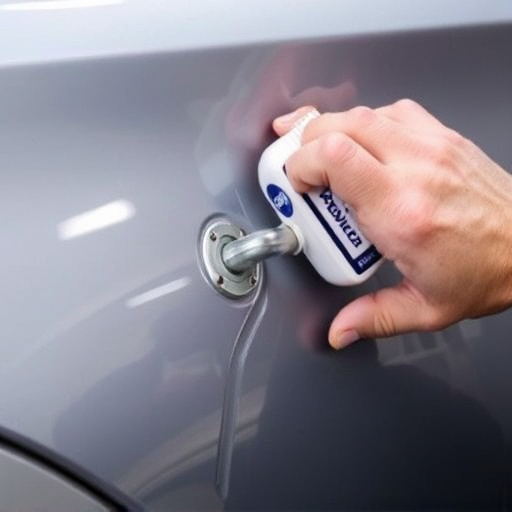The four-stage paint system is a meticulous, comprehensive approach to automotive refinishing, offering superior durability and aesthetic appeal compared to traditional methods. It involves four distinct stages: preparation (sanding, cleaning), priming (bonding agent), painting (color application), and clear coating (protection against scratches, UV damage). This systematic process ensures optimal adhesion, precise color accuracy, enhanced protection, smoother finishes, and reduced imperfections, streamlining auto detailing processes like bumper fixes or frame straightening.
Discover the transformative power of a four-stage paint system in optimizing repair time frames. This innovative approach, involving multiple application stages, offers superior durability and aesthetic appeal compared to traditional methods. By understanding each stage’s critical role, from surface preparation to final coat, you’ll unlock strategies to streamline repairs without sacrificing quality. Explore real-world case studies highlighting the significant time savings and enhanced outcomes achievable with this game-changing technique.
- Understanding the Four-Stage Paint System
- – Brief explanation of a multi-stage paint process
- – Importance and benefits of a four-stage system
Understanding the Four-Stage Paint System
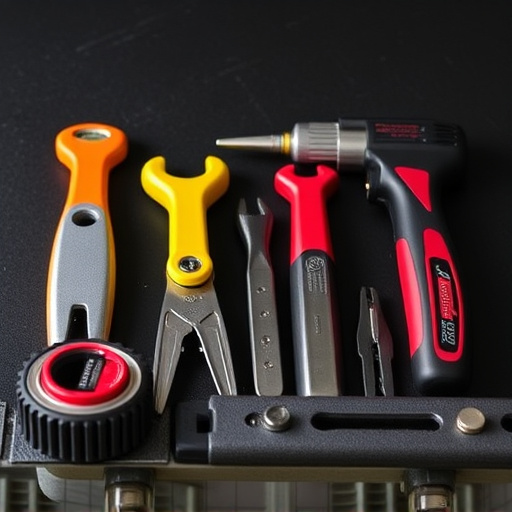
The four-stage paint system is a meticulous process designed to achieve flawless results in automotive refinishing. It involves four distinct stages: preparation, priming, painting, and clear coating. Each stage plays a crucial role in ensuring the final finish is not just visually appealing but also durable. In the initial preparation phase, the damaged area, such as a vehicle dent repair, is meticulously prepared to ensure the new paint adheres properly. This includes sanding, cleaning, and priming the surface to create an even base.
The subsequent priming step serves as a crucial bonding agent between the bodywork services and the topcoat. It helps in sealing any pores or imperfections left from the preparation process. The painting phase involves applying the desired color, allowing it to dry completely before moving on. Finally, the clear coating adds a glossy finish, protecting the paint job against scratches, chips, and UV damage, enhancing the overall aesthetics of the car bodywork services.
– Brief explanation of a multi-stage paint process
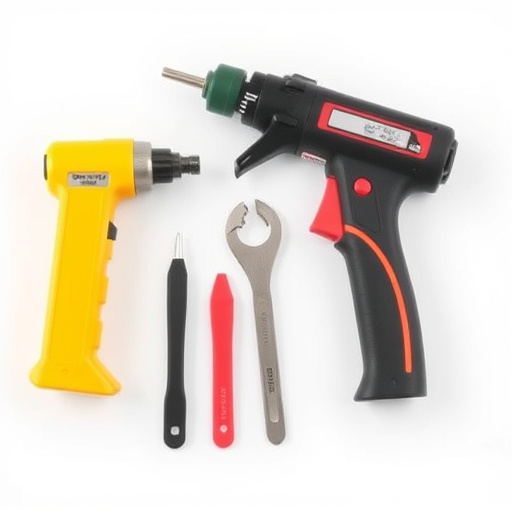
A multi-stage paint process involves several distinct layers of coating applied to a surface, typically as part of a vehicle repair or car body repair. This meticulous approach ensures a durable and aesthetically pleasing finish. The four-stage paint system is a standard in auto repair services, encompassing preparation, primer, base coat, and clear coat applications. Each stage plays a crucial role in achieving a high-quality result.
During the initial preparation phase, the damaged area of the vehicle is meticulously prepared to ensure optimal adhesion for the subsequent coats. The primer layer acts as a bridge between the car body repair and the base coat, providing an even surface and enhancing paint durability. The base coat adds color and protection, while the clear coat serves as the final protective layer, ensuring longevity and shine. This systematic approach not only expedites the vehicle repair process but also guarantees a superior quality finish.
– Importance and benefits of a four-stage system
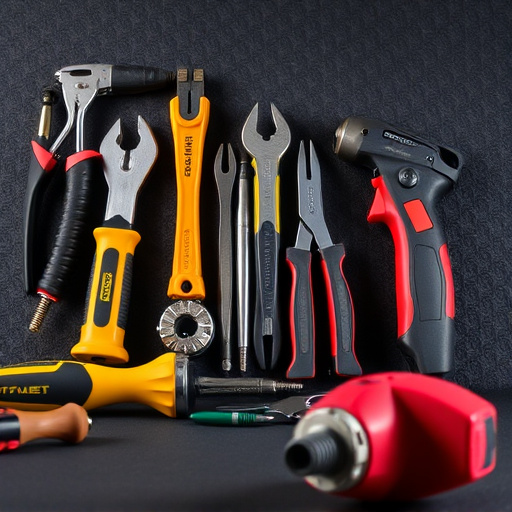
A four-stage paint system is a sophisticated approach to automotive refinishing that significantly enhances the quality and durability of paint jobs. Unlike traditional methods, this system breaks down the painting process into four distinct stages: surface preparation, primer application, color coating, and clear coat finishing. Each stage is meticulously designed to ensure optimal adhesion, color accuracy, and protective layers for vehicles undergoing repairs, including bumper repairs or frame straightening.
The benefits of a four-stage paint system are manifold. It offers superior protection against environmental factors like UV rays and corrosion, ensuring that repaired parts last longer. The meticulous application process also results in smoother finishes, more accurate color matching, and reduced chances of imperfections, enhancing the overall aesthetic appeal of auto detailing. Moreover, this method is particularly beneficial for complex repairs, as it allows for precise control during each stage, ultimately streamlining the bumper repair or frame straightening process.
The implementation of a four-stage paint system offers significant advantages in terms of durability, quality, and efficiency compared to traditional methods. By meticulously breaking down the process into distinct stages, this system ensures a thorough preparation, priming, painting, and finishing routine. As a result, not only do these steps enhance the overall aesthetic appeal of surfaces, but they also extend the lifespan of paint jobs, making them more cost-effective in the long run. Optimizing repair time frames further enhances productivity, ensuring that surfaces are restored to their best condition promptly.

